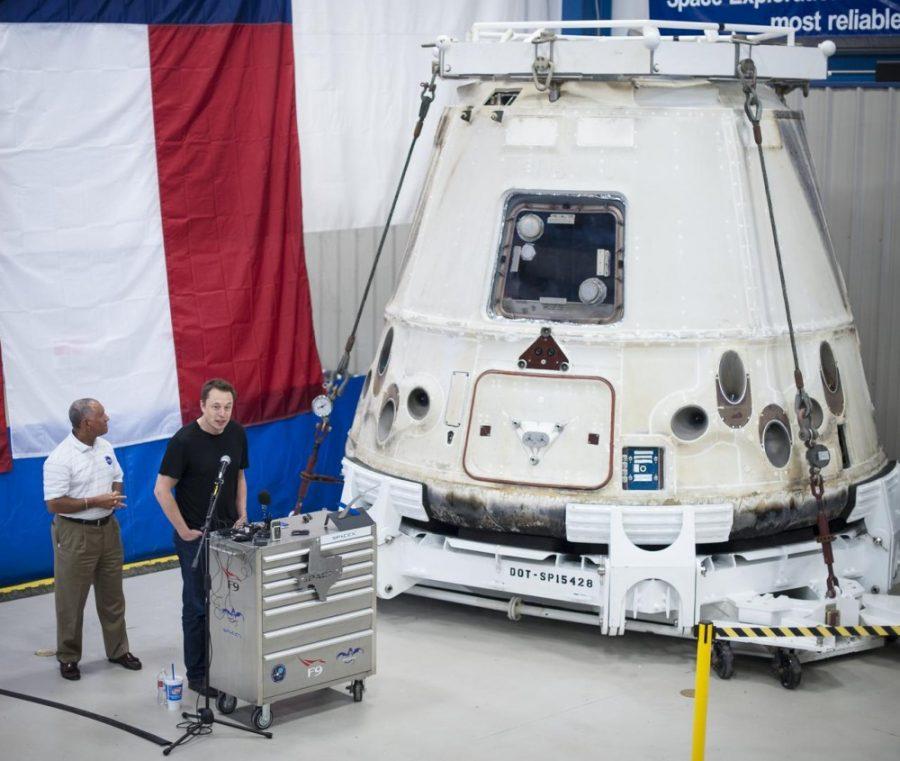Last week was a busy time for science. Innovations and new discoveries ranged from the fields of earth science and chemistry to physics and beyond. Here is a quick recap:
Recent observations have shown an extensive crack, 70 miles long, in an Antarctic ice shelf. Investigators from the Antarctic research group, Project MIDAS, spotted the crack in an ice shelf named Larsen C, which is the largest ice shelf in the Antarctic peninsula, spanning about 19,000 square miles.
Previous satellite images revealed the crack back in 2014, but on Jan. 5 members of Project MIDAS reported an 18-kilometer increase (approximately 11 miles). If the crack reaches the other edge of the ice shelf 20 kilometers away, a chunk of ice the size of Delaware could snap off. This would comprise 10 percent of the shelf and could lead to its demise. It would also impair researchers who camp on the shelf during the Antarctic Summer to conduct research.

The most convoluted atomic knot has been formed by chemists at the University of Manchester in England. The knot is only 20 nanometers long and is comprised of nitrogen, oxygen, carbon, hydrogen, iron ions and chloride ions. The knot is a kind of prime knot, which cannot be torn down into simpler pieces. The entire knot consists of 192 total atoms, with 24 atoms at each crossing point.
The first synthetic knot of this kind was made in 1989 and was the only one known how to be made until 2011. Study co-author David Leigh, Sir Samuel Hall professor of chemistry at the University of Manchester, described this as “pretty ridiculous” since mathematicians know of 6 billion different kinds of prime knots.
Potential future applications for this knot—and similar ones—range from surgery to better bulletproof vests.
RELATED: Horror movies in winter: what makes us enjoy fear?
Rethinking Reality—a series of five weekly Monday lectures on modern physics will be held at the UA in Centennial Hall starting Jan. 30 at 7 p.m. The lectures, all of which are free to attend, will cover some of the most advanced concepts in modern physics, with each lecture covering a different subject presented by a different professor. Sponsors include Ventana Medical Systems, Cox Communications and Tucson Electric Power.
All lectures will be available on the web, live on Arizona Public Media on Demand and will be aired Mondays on AZPM a week after they happen.
SpaceX recently launched a Falcon rocket in California. The 70-meter rocket aims to put 10 satellites into orbit for satellite operator Iridium Communications Inc. The rocket launched Jan. 14 at 9:54 a.m. and was the first successful launch SpaceX has had since an explosion that occurred while fueling for a pre-flight test in Florida last September.
Investigators deduced a canister of helium burst in the rocket’s liquid oxygen tank, initiating the explosion and destroying a rocket booster along with an Israeli communications satellite in the process.
After Saturday’s successful launch, part of the rocket landed on a designated platform in the Pacific Ocean, allowing for rocket recycling. SpaceX plans on launching 27 rockets in 2017 for both commercial customers and cargo transportation for NASA.
RELATED: Flying the friendly skies: UA scientists use airplanes to research climate change
Research shows learning to play an instrument can improve both brain development and reaction time. The University of Montreal study shows playing instruments hones the brain and could help fight cognitive decline in the elderly.
In the experiment subjects placed one hand on a box that would vibrate every so often and another hand on a mouse. They were told to click the mouse when they felt a vibration.
Results indicated participants who had played instruments for over seven years had a much sharper reaction time than those that hadn’t played any instruments.
University of Montreal biomedical ethics graduate student Simon Landry explained that the integration of multiple senses used to play an instrument hones the mind, increasing reaction time.
Follow William Rockwell on Twitter.









